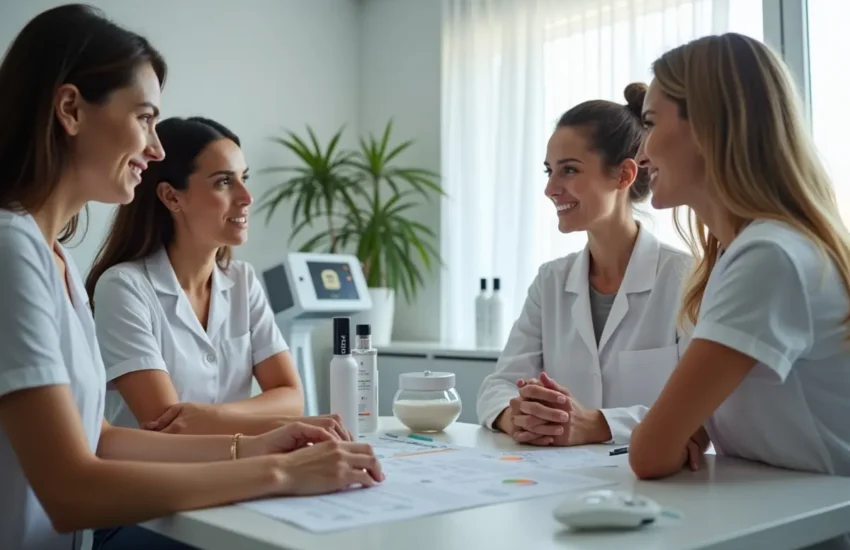Factors Affecting Your Chiropractic Experience
Many chiropractors use various hands-on or instrument-assisted manipulation techniques to manipulate muscles, fascia and ligaments (similar to massage). They also utilize stretching and exercise strategies. Chiropractic adjustments are a gentle form of spinal manipulation to reduce pain and improve function. You may hear cracking sounds when a joint is adjusted, but this has to do with expanding the joint space and not the bones themselves.

The Chiropractor’s Technique
Chiropractic adjustments relieve pain, relax muscles and enhance coordinated movement through nervous system reflexes and joint mobilizations. The cracking sounds you hear during an adjustment have nothing to do with bones popping in and out of place but rather the expansion and contraction of a joint’s space, which releases gas within the synovial fluid that fills the joints. Depending on your needs, Brad Kern may use a variety of techniques. The most common direct thrust technique involves rapid thrusts and impulses adjusting the spine. This hands-on manipulation is the most widely used method in chiropractic practice. New techniques, such as decompression adjustments, release joint restrictions from a different angle and can feel less forceful than traditional adjustments. This approach is particularly effective in treating neck and back pain but can also benefit migraines, headaches and whiplash.
The Chiropractor’s Hands
A chiropractor is an expert that is highly trained in the diagnosis and treatment of musculoskeletal disorders. They treat many conditions, including low back pain, neck pain and other muscle discomfort. The primary care method is spinal manipulation using the chiropractor’s hands or adjusting tools. When performed properly, a chiropractic adjustment delivers a quick, high-velocity, low-amplitude thrust to your misaligned spinal joint or vertebrae. It relieves pressure on your nerves to restore motion, flexibility and balance in your body. An audible popping sound can sometimes accompany the thrusts. This results from a release of nitrogen gas in your joint capsule. The joint can move more easily as a result of the reduction of scar tissue. Many chiropractors use instrument adjusting to reduce the strain on their hands. This technique has been proven to be just as effective as manual manipulation. It also has the added benefit of a lower risk of post-treatment soreness.
The Chiropractor’s Table
A chiropractor uses a specially designed table to perform chiropractic adjustments. Each adjustment will be unique to the patient’s situation and needs. A typical adjustment involves chiropractors applying a high velocity, low amplitude thrust to the misaligned spinal joint or vertebra. It unlocks the joint, relieving pressure on nerves and restoring motion, function, flexibility and balance to your spine and nervous system. To determine the precise areas to be adjusted, your chiropractor will review your medical history, perform a physical examination, and assess your posture. This will help them find the source of your symptoms and pinpoint any areas of dysfunction. The best chiropractor will also use “palpitations” to test for trouble spots on the body. This involves feeling the flow of neurotransmitters, like messages from your brain to your body and vice versa, through the affected area. If the flow is interrupted, it can cause pain and dysfunction. If it’s restored, the underlying problem can resolve.
The Chiropractor’s Tools
Spinal manipulation (also called chiropractic adjustment) releases restrictions in your joints. The joints are beneath the muscles, so a chiropractic adjustment addresses your body at a deeper level than a simple stretch or massage. This therapy optimizes spine movement, enhancing your entire system’s synchronicity. Your chiropractor uses various hands-on techniques to adjust your spine and other joints. These include myofascial release, spinal manipulation and articulation of the joint. Activator adjusting tools are handheld spring-loaded devices that deliver low-force thrusts to problem areas. The newest versions of these tools have different force settings to accommodate varying patient sizes.
Another tool your chiropractor may use is a flexion-distraction table. This segmented table allows your chiropractor to manipulate various parts of the spine at the push of a button. This technique is great for relieving neck pain that results from long-term stiffness. A flex-distraction table also reduces facet joint syndrome, using heated radiofrequency to shrink the nerves that send pain signals to your brain.


